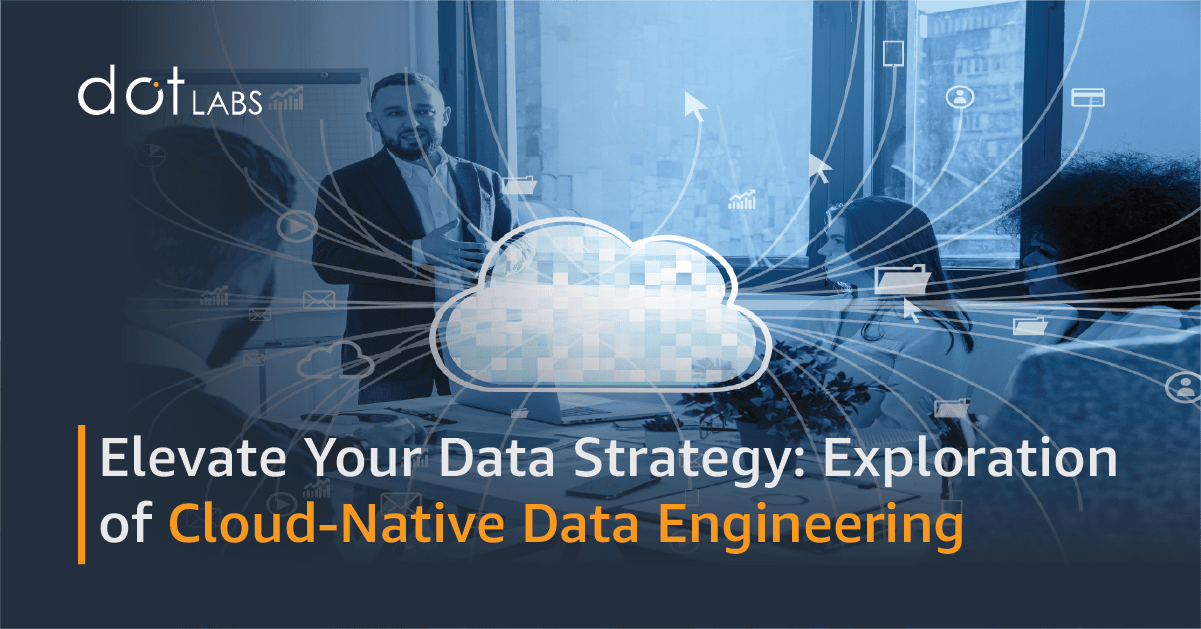In a groundbreaking move, Amazon Web
Services (AWS) has officially announced the general availability of Amazon
Aurora MySQL zero-ETL integration with Amazon Redshift. This game-changing development promises
to revolutionize data integration processes, making them more efficient and
streamlined than ever before.
Zero-ETL Unleashed: A
Paradigm Shift
The introduction of Amazon Aurora
MySQL zero-ETL integration with Amazon Redshift marks a significant leap
forward in the world of data management. ETL (Extract, Transform, Load) processes have long been a
cornerstone of data integration, but the zero-ETL approach takes simplicity and
efficiency to new heights.
Traditionally, ETL processes have
been a necessary step in the data integration journey. They often involve
complex transformations and manipulations, introducing potential bottlenecks
and points of failure. With the advent of zero-ETL, these barriers are
dismantled, offering users a direct and seamless connection between Amazon
Aurora MySQL and Amazon Redshift.

This zero-ETL integration between
Amazon Aurora and Amazon Redshift unlocks opportunities for you to run near
real-time analytics and machine learning (ML) on petabytes of transactional
data in Amazon Redshift. As this data gets written into Aurora, it will be
available in Amazon Redshift within seconds.
It also enables you to run
consolidated analytics from multiple Aurora MySQL database clusters in Amazon
Redshift to derive holistic insights across many applications or
partitions. Amazon Aurora MySQL
zero-ETL integration with Amazon Redshift processes over 1 million
transactions per minute (an
equivalent of 17.5 million insert/update/delete row operations per minute)
from multiple Aurora databases and makes them available in Amazon Redshift in
less than 15 seconds (p50
latency lag).
Furthermore, you can take advantage
of the analytics and built-in ML capabilities of Amazon Redshift, such as
materialized views, cross-region data sharing, and federated access to multiple
data stores and data lakes.
How Zero-ETL works:
To get started, we need to navigate
to Amazon RDS and select Create zero-ETL
integration on the Zero-ETL integrations page.

On the Create zero-ETL
integration page, we need to follow a few steps to configure the
integration for my Amazon Aurora database cluster and my Amazon Redshift data
warehouse.
First, we define an
identifier for my integration and select Next.

On the next page, we need to select the source database by selecting Browse RDS databases.

Here, we can select my existing database as the source.

The next step asks us to the target Amazon Redshift data warehouse. Here, we have the flexibility to choose the Amazon Redshift Server-less or RA3 data warehouse in my account or a different account. We select Browse Redshift data warehouses.

Then, we’ll choose the target data warehouse.

Because Amazon Aurora needs to
replicate into the data warehouse, we need to add an additional resource policy
and add the Aurora database as an authorized integration source in the Amazon
Redshift data warehouse.
We can solve this by manually
updating the Amazon Redshift console or letting Amazon RDS fix it for me. We
tick the checkbox.

On the next page, it shows us the changes that Amazon RDS will perform for us. We’ll select Continue.

On the next page, we can configure the tags and also the encryption. By default, zero-ETL integration encrypts your data using AWS Key Management Service (AWS KMS), and we have the option to use our own key.

Then, we need to review all the configurations and select Create zero-ETL integration to create the integration.

After a few minutes, our zero-ETL integration is successfully created. Then, we switch to Amazon Redshift, and on the Zero-ETL integrations page, we can see that we have our recently created zero-ETL integration.

Since the integration does not yet have a target database inside Amazon Redshift, we need to create one.

Now the integration configuration is complete. On this page, we can see the integration status is active, and there is one table that has been replicated.

For testing, we create a new table in my Amazon Aurora database and insert a record into this table.

Then we switched to the Redshift query editor v2 inside Amazon Redshift. Here we can make a connection to the database that we formed as part of the integration. By running a simple query, we can see that our data is already available inside Amazon Redshift.

The zero-ETL integration is
considered very convenient for two reasons.
First, we can unify all data from
multiple database clusters together and analyze it in aggregate.
Second, within seconds of the
transactional data being written into Amazon Aurora MySQL, this zero-ETL
integration seamlessly makes the data available in Amazon Redshift.
Key Benefits of Zero-ETL
Integration
The elimination of ETL processes
brings forth a myriad of advantages for businesses and data professionals.
First and foremost, it significantly reduces the time and resources
traditionally spent on data transformations. Real-time data can now flow
effortlessly from Amazon Aurora MySQL to Amazon Redshift, enabling faster
decision-making and more agile responses to changing business dynamics.
Moreover, zero-ETL integration
enhances the overall reliability and consistency of data. By minimizing the
number of intermediary steps, the potential for errors or discrepancies is
substantially reduced. This ensures that businesses can rely on a more accurate
and up-to-date representation of their data, fostering trust in decision-making
processes.
A Seamless Journey: How It
Works
The zero-ETL integration between
Amazon Aurora MySQL and Amazon Redshift is designed for simplicity. By
leveraging native integration capabilities, data seamlessly moves between the
two services without the need for intricate transformations. This allows users
to focus on deriving insights from their data rather than grappling with
complex integration processes.
The integration also supports
continuous data replication, ensuring that changes in the source database are
promptly reflected in the target Redshift cluster. This real-time
synchronization empowers businesses to work with the most current information,
fostering a more dynamic and responsive data environment.
Embracing the Future of
Data Integration
For businesses already leveraging
Amazon Aurora MySQL and Amazon Redshift, embracing zero-ETL integration is a
straightforward journey. AWS provides comprehensive documentation and resources
to guide users through the setup process, making it accessible for both
newcomers and seasoned professionals.
In conclusion, the general
availability of Amazon Aurora MySQL zero-ETL integration with Amazon Redshift
marks a pivotal moment in the evolution of data integration. Businesses can now
bid farewell to the complexities of traditional ETL processes, ushering in a
new era of efficiency, reliability, and real-time insights. As we collectively
step into this future, the promise of streamlined data integration beckons,
empowering businesses to thrive in an increasingly data-centric world.

Dot Labs is an IT
outsourcing firm that offers a range of services, including software
development, quality assurance, and data analytics. With a team of skilled
professionals, Dot Labs offers nearshoring services to companies in North
America, providing cost savings while ensuring effective communication and
collaboration.
Visit our website: www.dotlabs.ai, for more information on how Dot
Labs can help your business with its IT outsourcing needs.
For more informative
Blogs on the latest technologies and trends click
here




